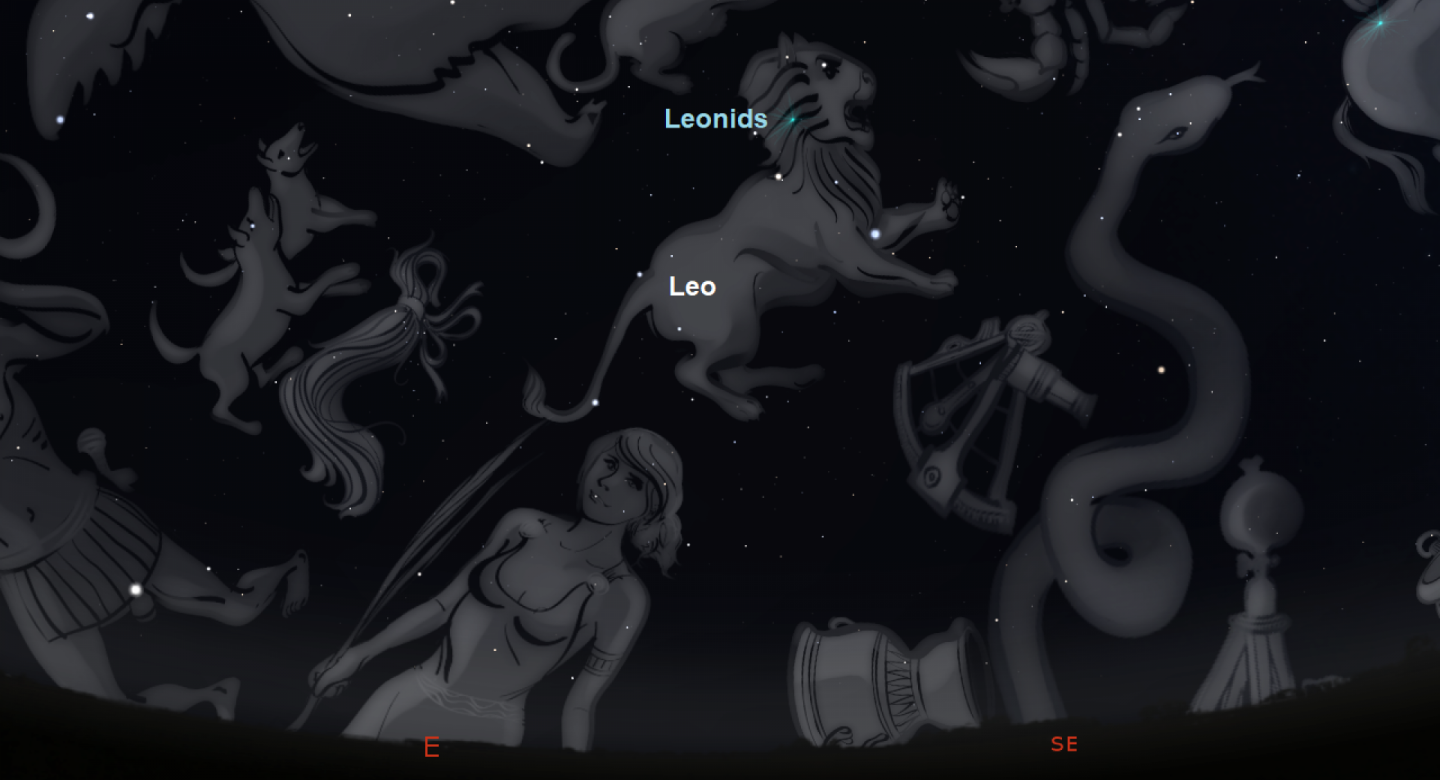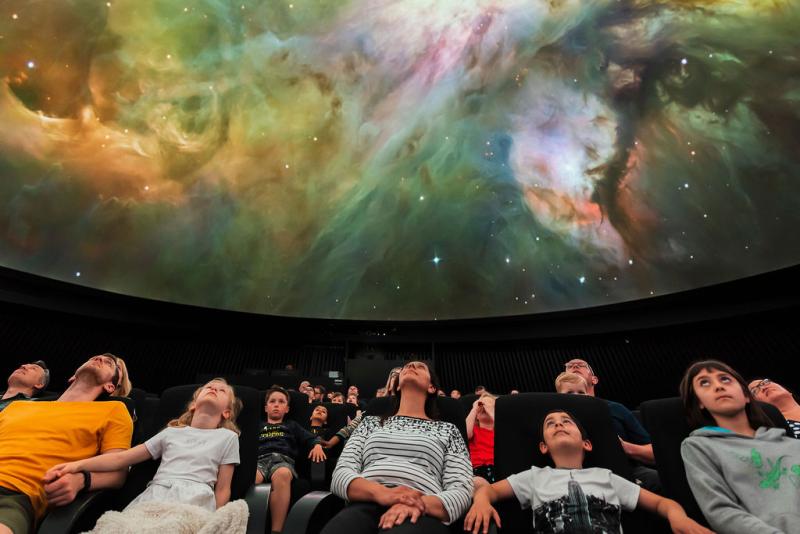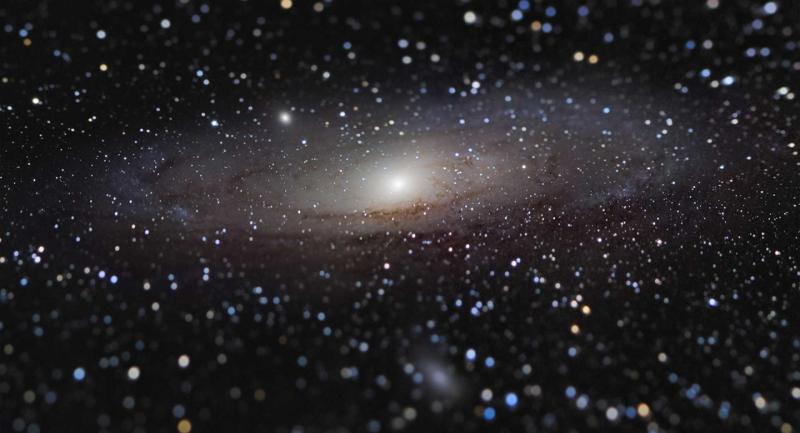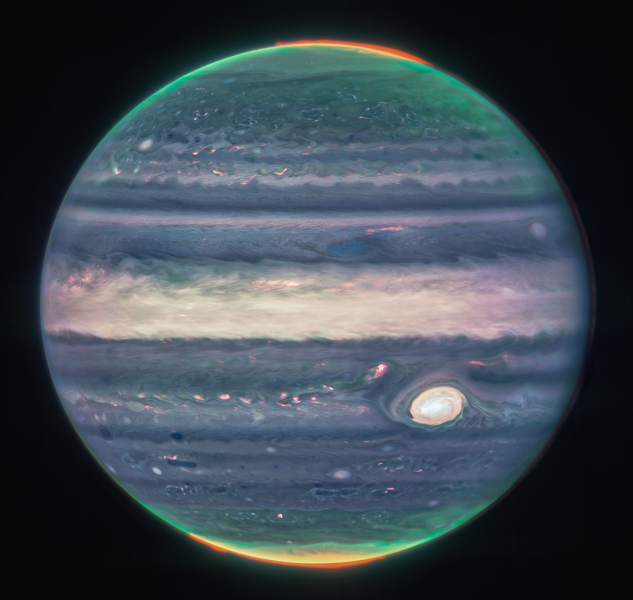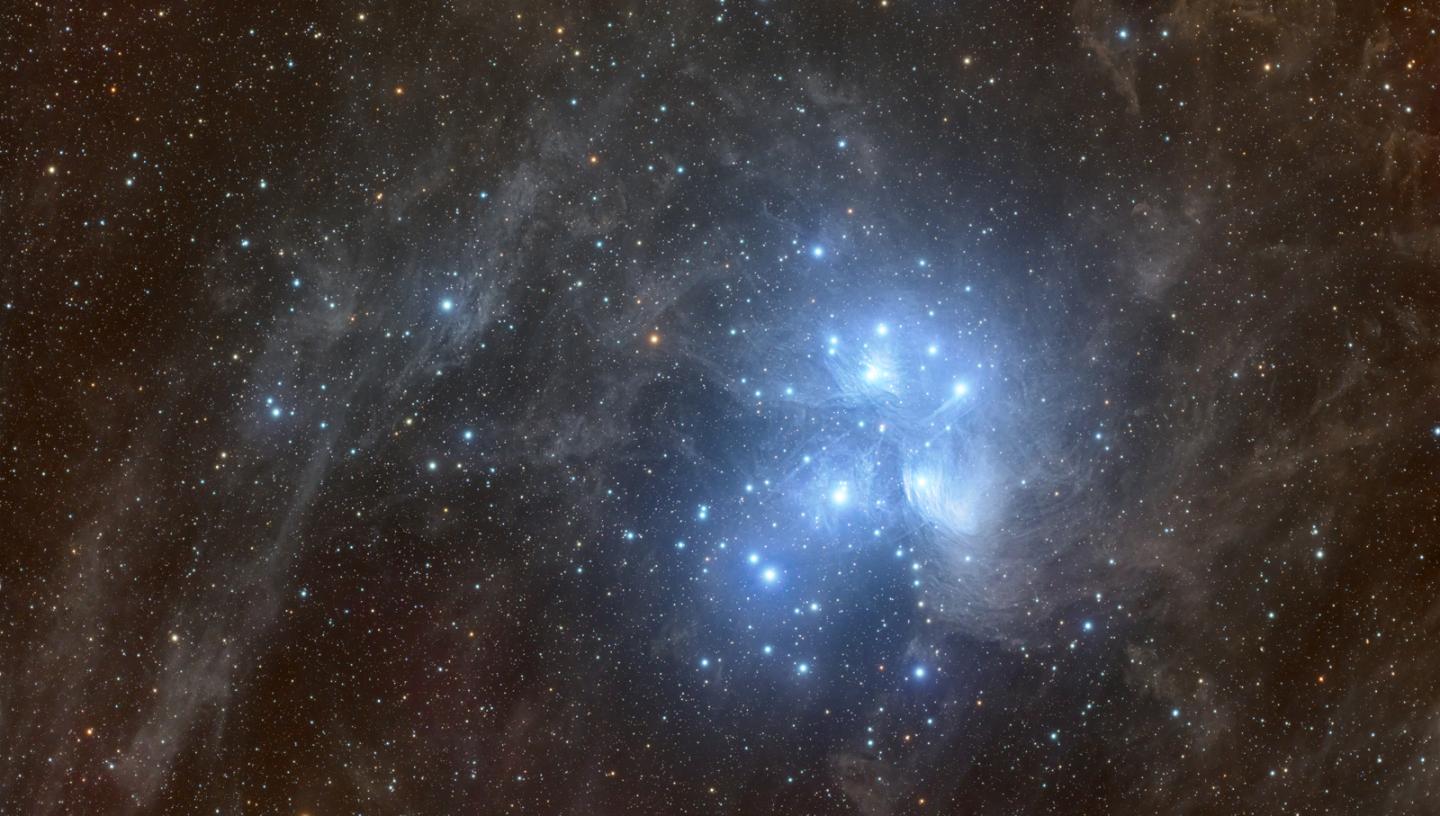
Discover what to see in November's night sky, including the Leonid meteor shower, several planets, and the Pleiades star cluster
By Lily Goodchild, Work Experience Student and Lexi Dragovic, Astronomy Education Assistant
Top 3 things to see in the night sky in November 2023
- 2-3 November - Jupiter at opposition
- 17-18 November - the peak of the Leonid meteor shower
- Throughout the month - the 'Seven Sisters', the Pleiades!
(Details given are for London and may vary for other parts of the UK)
See December 2023's highlights
Look Up! Podcast
Subscribe and listen to the Royal Observatory Greenwich's podcast Look Up! As well as taking you through what to see in the night sky each month, Royal Observatory astronomers pick two space news stories to talk about. This month we give you an update on the longest marsquake ever recorded and celebrate the return of OSIRIS-REx and the launch of the Psyche mission. November's episode is available to listen to below.
At the start of November, join the conversation on X (formerly Twitter) (@ROGAstronomers).
Our podcast is available on iTunes and SoundCloud.
The majestic Leonid meteor shower
We're approaching winter now, so make sure you keep yourselves warm and comfortable when looking up at the night sky.
On the evening of the 17th and early hours of the 18th November, if you look northeast and turn slightly to the right you will find the constellation of Leo. The Leonid meteor shower is named after this constellation because the radiant of the shower is at the head of Leo.
The Leonids are visible from both the Northern and Southern Hemispheres, so no matter where you are in the world, if you’re away from light pollution and have a clear sky you should be able to sit back and watch this annual event. The shower will be fairly observable - it's predicted to have a rate of 10 meteors per hour, and the Moon will only be a 5-day-old waxing crescent so won't cause too much light pollution.
Jupiter and Uranus at opposition
This month we are very lucky to see two planets in opposition: Jupiter and Uranus. Opposition means they will be at the point in their orbit closest to Earth, and also completely opposite to the Sun. Opposition is the best time to view any planet, as they are brighter than usual.
Jupiter will reach opposition on 2-3 November, and you could say this is quite a rare celestial event, as it happens only once every 13 months. It will be visible all night, and the magnitude will be –2.9.
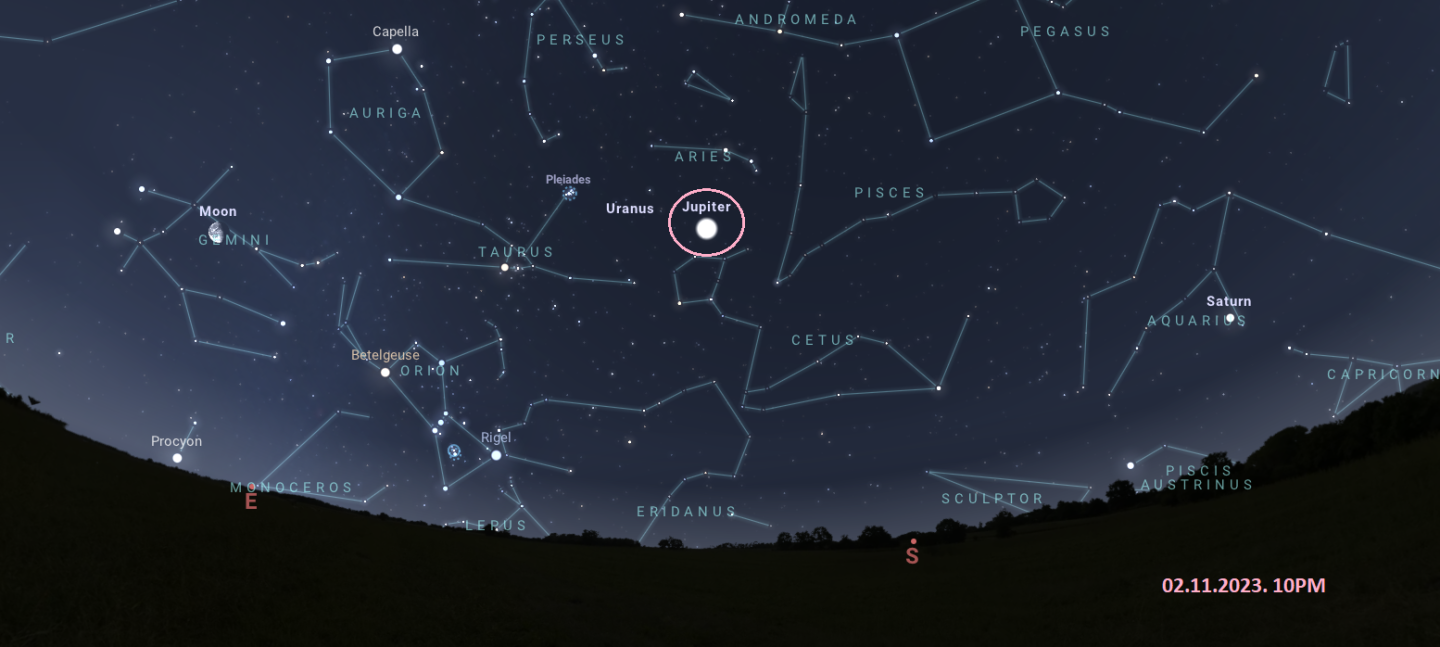
Uranus will reach opposition later in the month on 13 November, when it will be 18.6 AU away from Earth. It will have a magnitude of +5.6, making it possible to spot with the unaided eye. If you get a chance to stargaze from a less light-polluted area and if the weather is on your side, you will be able to spot it.
If not, you will be able to see it with a telescope, if you have access to one. Through a telescope, Uranus appears as a lightly green-tinted disk, and you might even be able to spot some of its moons! If you miss the opposition on the 13th, don’t worry, as Uranus will stay bright until mid-December.
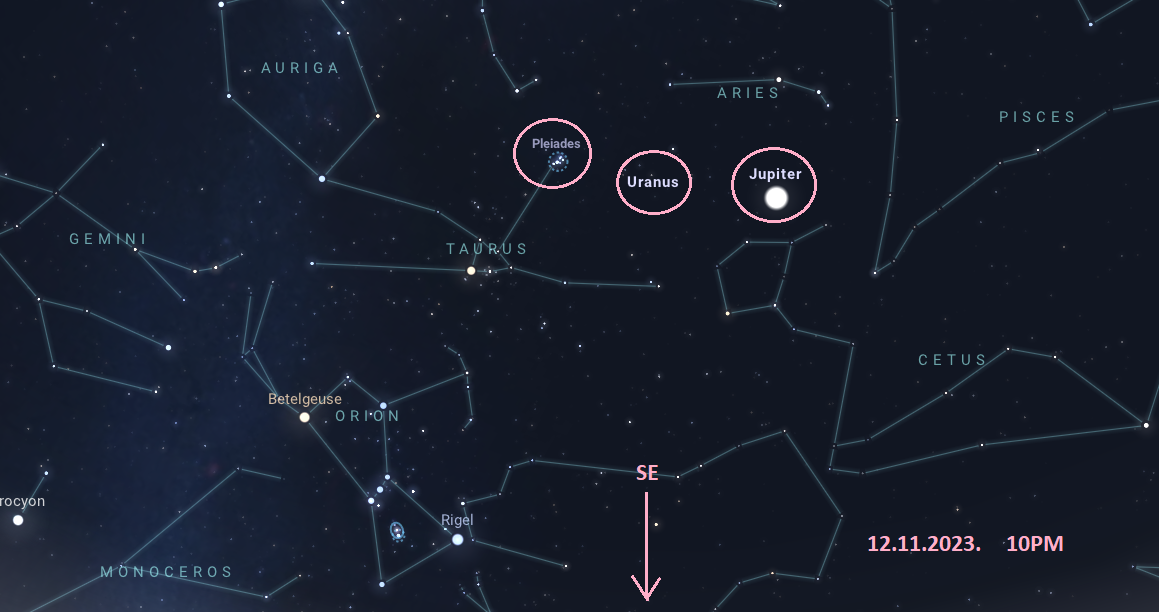
Venus, Saturn and Neptune are also visible
Venus will be visible throughout this month in the early morning from about 2:30am until dawn above the southeastern horizon. Joining Venus in the sky is the aforementioned Jupiter which will start off this month by rising above the eastern horizon just after 5:30pm, and setting in the west just after 6am. By the end of the month it will only be visible between 1 and 4:30am.
Saturn will also be accessible this month in the evenings, but towards the end of the month will only be visible for 2 hours, so the best time to see it is from around 5 to 7pm. Neptune will be best viewed throughout this month from 6 to 7pm, but make sure you use a telescope as it is the farthest planet from the Sun.
Cepheus and Orion
November is also a good month to view the Cepheus constellation, in the far-northern sky. In Greek mythology Cepheus was the father of Andromeda and husband to Cassiopeia, both of whom have their own constellations slightly to the right of Cepheus.
The brightest star of the King Cepheus is Alpha Cephei, also known as Alderamin, and is hotter and about 20 times brighter than our Sun. I'm sure many of you will be thrilled to hear Orion the Hunter is returning to the south of our night sky. It is one of the most recognisable constellations, with its stars Betelgeuse and Rigel two of the top ten brightest stars in the sky.
You won’t even need a telescope or binoculars to make out the blue-white tint given off by Rigel, or the deep reddish colour that makes Betelgeuse stand out among the stars. Just below Orion's belt you might be able to make out the Orion Nebula, otherwise known as M42, which is a diffuse nebula in the Milky Way visible both with a telescope and the unaided eye.
The Pleiades star cluster
November is the best month to view the Pleiades star cluster which is also known as the Seven Sisters or M45. In Greek mythology the seven sisters were called Maia, Alcyone, Asterope (or Sterope), Celaeno, Taygete, Electra, and Merope. This star cluster is found just above the constellation of Taurus which is home to the star of Atlas, who in Greek mythology was the father of the sisters. Their mother, Pleione, also had a star named after her, and sits just slightly northwest of Atlas. This cluster will be at its highest point at around midnight on 18 November.
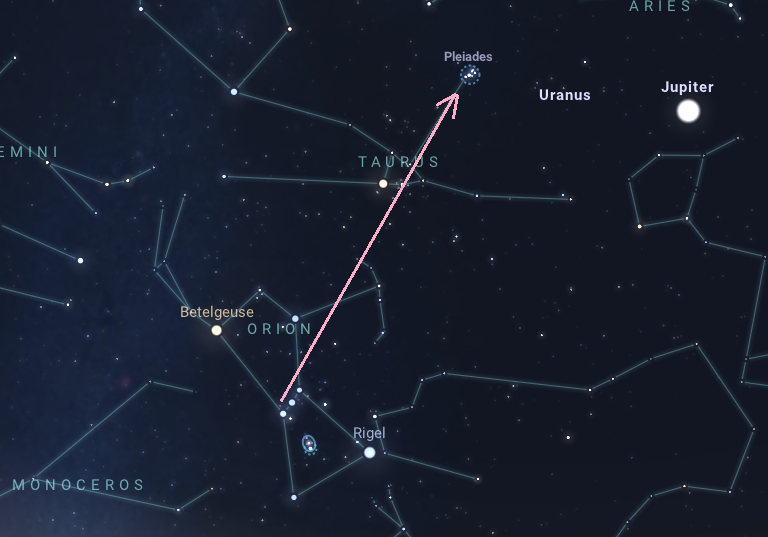
November's night sky in the Southern Hemisphere
Those south of the Equator can also enjoy the oppositions of Jupiter and Uranus in northern skies. Two things that are only visible in the Southern Hemisphere are the Small and Large Magellanic Clouds, which are small, satellite galaxies of the Milky Way.
You’ll find them in the southern sky for most of the night during November and they are visible to the naked eye on clear and dark nights. They are located in the constellations of Tucana and Dorado, respectively.
Moon phases for November 2023
Last Quarter: 5 November, 08:36
New Moon: 13 November, 09:27
First Quarter: 20 November, 10:49
Full Moon: 27 November, 09:16
Never miss a shooting star
Sign up to our space newsletter for exclusive astronomy highlights, night sky guides and out-of-this-world events.
You may also be interested in
Header image: Pleiones Daughters by André Vilhena - Astronomy Photographer of the Year 2023 Stars and Nebulae category
